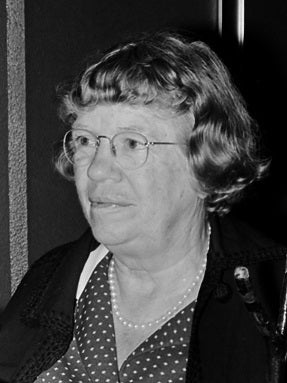How much have societal attitudes toward the single life for women changed in the past forty to fifty years? Clues can be found in Margaret Mead’s Redbook column from 1963 to 1978. One of the best-known anthropologists of the twentieth century, Mead commented on wide-ranging issues, from politics, education and religion, to child-rearing, gender relations and population control.

Mead is most remembered for her progressive views on contentious issues, particularly those related to sex and reproduction. For example, she espoused pro-choice policies, advocated for birth control, championed women’s rights, and accepted homosexuality and bisexuality as normal. Indeed, Mead was widely hailed as a moving force behind the sexual revolution of the 1960s, a reputation for which she was both admired and maligned. However, on the topic of single women and their life choices, Mead endorsed surprisingly conservative positions.
When asked her opinion on single women adopting children (in the June 1968 issue), Mead gave a highly qualified response. In essence Mead said married couples are suitable parents in regular adoptions of normal children, but single women, along with aging and other “less-ideal parents,” were acceptable only for special needs children. Ethnic minority children, those with a serious disability, and ones deficient in intellectual abilities or emotional stability were viewed as appropriate candidates for adoption by an unmarried female. These children, many of whom had been moved around in institutions and foster care, were described as hard to place in “good homes.” Only in these less fortunate situations, where the options were limited, was a single woman deemed an appropriate adoptive parent.
Mead didn’t elaborate on why she disapproved of single motherhood, apparently assuming her readers already understood the rationale behind her tarnished image of unmarried women having children.
Other Redbook columns also hint at Mead’s thinking on the life choices of single women. When asked whether, if she were a young woman living in the United States today, she would want to have a child (September 1976), Mead responded affirmatively. However, she explicitly excludes single motherhood, stating “I would never under any circumstances consider having a child who I knew would be fatherless after it was conceived.” Again, she doesn’t provide a reason for her position.
Mead’s pro-marriage convictions surface in responses to related topics as well. When asked why marriage is so different from other male-female relationships, such as boyfriend and girlfriend (May 1975), she replied “marriage remains for us the model of complete commitment.” So important was the marital bond, she explains, it was “used by Christians to stand for the relationship between Christ and His church.”
Married and divorced three times herself, and the mother of one daughter, Mead clearly believed strongly in the institution of marriage. Although she acknowledged that the growing divorce rate was troubling, she attributes this to young people not being prepared for total commitment (May 1975). “We have reared a generation of women and men,” she says, “few of whom know how to make a success out of a first marriage.”
In other responses, Mead seemed to accept the growing trend of unmarried people, both young and old, living together before tying the knot. The term “partner” had not yet entered the lexicon, and one reader asked what she thought cohabiting couples should be called (January 1976). In response, Mead asked readers who approved of such relationships what they thought the best term should be. No mention of responses to this query is found in the volume of collected columns.
Other hints at Mead’s perspectives on the single life may be found in her opinions on going out alone. When asked if she ever felt the need for solitude (February 1971), Mead said she liked to spend non-work time with people, noting she “would never go to a play or a concert or an art exhibition alone.”
Elsewhere, on the topic of occasional splurging for things (September 1976), she says she enjoys “being taken out to dinner by someone who is well-to-do . . . someone who is himself a connoisseur of good restaurants and good food.” It is probably safe to assume that eating out alone was not something Mead cared to do.
How much her views reflect her own age at the time (75 years), or the cultural context of the era, is uncertain. Most likely they reflect a little of both and show how much attitudes have changed about the idea of solitary individuals, especially women, going out and doing things on their own.
One can only speculate that Mead’s views on the single life would differ significantly today, mirroring changes in society in general.
Mead aficionados often ask the question “What would Margaret Mead say?” (WWMMS). The topic of single parent adoptions might still merit a column today, but more likely the burning questions would address same-sex marriage and parenting instead, issues that weren’t even on the horizon half a century ago. Ethical issues related to reproductive technology, equally unheard of in decades past, also would likely have currency. One wonders, for example, WWMMS about the prospect of a child having two mothers, or for that matter two fathers or single fathers using surrogate mothers―possibilities not even envisioned back then. And one fervently hopes she would feel more comfortable going out alone, as millions of people currently do every day.
Metraux, Rhoda, ed. (1979). Margaret Mead: Some Personal Views. New York: Walker and Company.
M. J. Coreil is a cultural anthropologist who writes about contemporary social issues. Her work has appeared in Oregon Humanities and The Satirist, and she is the author of Social and Behavioral Foundations of Public Health. Some of her essays and satires can be found at tropicofcandor.com.
